Dissolvable Films: Dissolvable Films for Flexible Product Format in Drug Delivery
For pediatric and geriatric patients, fast-dissolving drug-delivery systems provide an easier way to take medications and vitamins. Oral thin films have evolved to provide systemic delivery of active pharmaceutical ingredients for over-the-counter and soon, prescription drugs. The authors review the practical benefits of dissolvable films, their manufacture, and their market potential.
Fast-dissolving drug-delivery systems were first developed in the late 1970s as an alternative to tablets, capsules, and syrups for pediatric and geriatric patients who experience difficulties swallowing traditional oral solid-dosage forms (1). In response to this need, a variety of orally disintegrating tablet (ODT) formats were commercialized. Most ODT products were formulated to dissolve in less than one minute when exposed to saliva to form a solution that could then be more easily swallowed.
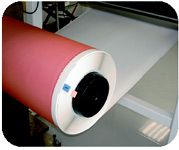
Authors
Dissolvable oral thin films (OTFs) evolved over the past few years from the confection and oral care markets in the form of breath strips and became a novel and widely accepted form by consumers for delivering vitamins and personal care products. Companies with experience in the formulation of polymer coatings containing active pharmaceutical ingredients (APIs) for transdermal drug delivery capitalized on the opportunity to transition this technology to OTF formats. Today, OTFs are a proven and accepted technology for the systemic delivery of APIs for over-the-counter (OTC) medications and are in the early- to mid-development stages for prescription drugs.
This article provides insight into the functionality and benefits of dissolvable films and reviews the current product landscape and market potential. The authors also explain how thin films are formulated and manufactured, and discuss potential future applications.
Functionality and benefits
Pharmaceutical companies and consumers alike have embraced OTFs as a practical and accepted alternative to traditional OTC medicine forms such as liquids, tablets, and capsules. OTFs offer fast, accurate dosing in a safe, efficacious format that is convenient and portable, without the need for water or measuring devices (2). OTFs are typically the size of a postage stamp and disintegrate on a patient's tongue in a matter of seconds for the rapid release of one or more APIs.
The formulation of dissolvable films is customarily facilitated through aqueous polymer matrices that span a wide molecular weight (MW) range, thereby providing flexibility to achieve certain physical properties. With the selection of appropriate polymer excipients, these properties can be tailored to meet specific API-loading needs and dissolution rates.
To date, the commercial launch of OTFs is primarily in OTC products addressing therapeutic categories such as cough/cold, sore throat, and antacid/gas relief as well as a number of nutritional supplement applications (2) (see Table I). In compliance with the appropriate monographs, current products deliver a specified API dose that is immediately released and ingested. Some drug forms are more easily used in OTFs than others (soluble versus nonsoluble), but we can expect API concentrations to increase as new OTF formulations are developed.

Table I
The capabilities of the base technology to create dissolvable films continue to evolve. For example, a common misconception of the OTF format is that it is limited with regard to the loading capacity of APIs. Some researchers reference a limit of 30 mg of API content as the maximum concentration. A more accurate statement would be that OTFs have the capability to load APIs up to 50% of the unit dose mass, as demonstrated by Novartis Consumer Health's Gas-X thin film, which contains 62.5 mg of simethicone per dose (3).
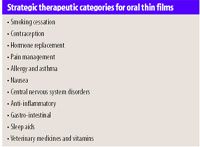
Strategic therapeutic categories for oral thin films
In addition, the benefits of the technology continue to be studied. Some drug substances may be absorbed more rapidly through the oral mucosal and esophageal tissues via OTF formats during ingestion. Because the drug enters directly into the bloodstream and avoids hepatic first-pass metabolism, bioavailability may be improved, and the drug can be administered in smaller doses. Smaller doses translate to fewer side effects and potentially improved patient compliance. Oral mucosal delivery via OTFs could become a preferential delivery method for therapies in which rapid absorption is desired, including those used to manage pain, allergies, sleep difficulties, and central nervous system disorders.
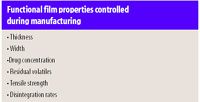
Functional film properties controlled during manufacturing
Benefit-driven development
The combination of the current platform capabilities, in conjunction with known and emerging benefits, suggests significant market potential for dissolvable films. According to the 2006 Technology Catalyst, Inc. (TCI) report, it is anticipated that the OTF market could reach $500 million this year and approach $2 billion in 2012. These estimates are contingent upon the launch of OTC formats in new categories such as smoking cessation products and the expected launches of generic and branded prescription drugs (3). We anticipate dramatic growth for OTFs over the next five years given several factors:
- The benefits of the thin-film format (fast, accurate, safe, and well-tolerated) are widely known and accepted by consumers (4)
- The development of thin-film prescription drugs are already in the early- to mid-development stages
- OTFs could potentially replace some orally dissolving tablets (ODTs) as a competitively priced alternative (3)
- Consumer studies indicate patients prefer a fast-dissolving product over a standard tablet (5)
- OTFs may provide drug manufacturers with significant opportunities in life-cycle management, market expansion, and product differentiation
- Acceptance of OTF technology in the OTC market has led to significant improvements in development cycle time with products potentially developed and launched within 12–16 months.
The TCI report forecasts growth only for the extension of OTF technology in oral immediate-release applications. The total market size expands if film technology is extended into emerging controlled-release and dermal or transdermal applications.
Looking forward, there is speculation as to how generic and branded drug manufacturers will strategically introduce the OTF format, particularly given the erosion of branded ODT products to their generic counterparts. The potential exists for some manufacturers to bypass the launch of ODT products and move directly to the development of OTFs, particularly in generic products and profitable branded-product platforms (3). This approach has some regulatory merit, as the US Food and Drug Administration stated that an OTF abbreviated new drug appliation (ANDA) may be submitted as an alternative dosage form for a chewable tablet. This statement, was made in conjunction with an approved suitability petition for an ANDA for famotidine orally dissolvable film in a 10-mg dose (6). Future suitability petitions for ANDAs using OTFs to substitute for ODTs can be expected (3).
Strategic therapeutic categories. OTF formats can be considered for any therapeutic category in which an oral solid, liquid, or ODT format is currently offered. Ideal applications are those that use drug compounds that are potent and possess a narrow therapeutic range (7). In addition, OTFs are proven to be a more beneficial platform for compromised populations such as children or the elderly where a quick, well-tolerated platform aids administration (8).
From a strategic standpoint, a group of therapeutic categories stand out as leading applications for the OTF format to expand beyond commercial OTC products on the market today (see sidebar, "Strategic therapeutic categories for oral thin films"). Development of a branded prescription OTF product for smoking cessation would set a precedent for the format, much like the launch of transdermal drug delivery patches for smoking cessation did in the 1990s.
Addressing solid-dose manufacturing trends
Several emerging trends in solid-dose manufacturing may be more easily overcome by OTF formats than other solid forms. A push toward developing low-dose, high-potency formulations (6) is leading to improvements in drug formulation. These include the conversion of drug substances to new forms such as from salt- to free-base, modified crystal morphology, and nanoparticles, which may present challenges for traditional solid-dose manufacturing. For example, nanoparticle drug substances may segregate more easily than micronized counterparts during the powder-blending and powder-flow processes that lead into the direct-compression operations in solid-dose manufacturing. Because APIs typically are added into bulk fluids in various ways before casting OTFs (suspensions, emulsions, or solutions), new high-potency drug forms do not present any unique barriers to OTF formulation and manufacturing.
A second trend is the increasing need for dosage formats using poorly soluble drugs (6). One solution to improving poorly soluble API delivery is through particle-size reduction such as nanoparticles. Other mechanisms include preparing the drug substance as a microemulsion or using co-solvents to solubilize the API. OTF formats can accommodate any of these techniques during manufacturing.
Flexibility in formulation
An inherent benefit of the OTF format to drug manufacturers is the flexibility of film formulation for a wide range of eligible APIs. A number of physical properties can be altered, including film-dissolution rates, material composition, and API absorption rates (5).
Customizing dissolution rates. OTFs are produced by combining water-soluble components and additives to attain a desired dissolution rate when exposed to a fluid. By modifying the combination of film-forming polymers and film thickness, formulators can design films to release their APIs in seconds, or for controlled-release applications, to deliver the dose over a period of hours (see Figure 1).
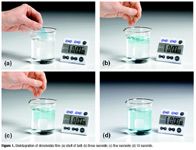
Figure 1
Formulators may select materials from several water-soluble polymers to deliver the desired film strength and disintegration properties. Examples of water-soluble polymers include natural gums, polyethelene oxide, derivatives of cellulose, polyvinyl pyrrolidone, polyvinyl alcohol, and acrylic-based polymers (7). The optimal properties of film strength and disintegration are obtained with the selection of a particular combination of hydrophilic polymers.
Material sets are tailored to meet specific guidances and regulations. Scientists have various formulary options to address regulatory and compliance needs including, but not limited to:
- Bovine spongiform encephalopathy/transmissible spongiform encephalopathies (BSE/TSE)
- Nongenetically modified organisms (non-GMO)
- United States Pharmacopeia (USP)
- European Pharmacopoeia (EP)
- Japanese Pharmacopeia (JP).
Analytical methods exist to characterize specific products and the potential impact of material selection on a product's performance.
Thickness and mass play a role in the determination of dissolution rates. Constructions composed predominantly of low-MW, water-soluble polymers at different thicknesses will result in a range of rapid disintegration rates and mechanical strengths. High-MW polymers tend to impart good mechanical properties; however, disintegration time is increased (9).
Future applications may require films that demonstrate specific dissolution rates to release drugs in different physiological conditions (e.g., neutral–alkaline pH). Such appliations can be created by adjusting film thickness or adding excipients that control the release. Dispersed-phase filler particles can be included to add bulk to the film, increase the solids portion to facilitate coating, or alter dissolution rates. When distributed throughout the film layer, air or other gases can also change the dissolution time (10).
Material options for API liquid casting. The flexibility of the OTF delivery format provides an unlimited set of raw materials to select from when developing and delivering APIs. These materials include traditional aqueous-soluble and solvent-soluble (nonaqueous soluble) ingredients (2). API-containing liquid formulations may be in the form of a solution, emulsion, suspension, or dispersion.
- Solutions: all ingredients, including drug substances, are fully dissolved and soluble in the bulk liquid
- Emulsions: these are typically used for aqueous formulations to which an oil-soluble ingredient such as a flavoring has been added
- Suspensions or dispersions: nonsoluble APIs or other excipients may be added to the bulk-liquid formulation under careful controls before casting to assure the dispersed phase remains suspended for uniformity.
Taste-masking options. Similar to other oral immediate- release drug delivery forms in which the dosage form contacts the tongue, taste-masking plays a critical role in the success of a product's acceptance and is an equally critical component of the film's formulation. Many of the same taste-masking techniques used to formulate syrups and soft-chew oral dosage medications can be used in OTFs. Traditional flavor and sweetener combinations, encapsulation or particle coating of the API, and complexation with ion-exchange resins are some of the techniques that may be successfully applied for masking bitter-tasting or objectionable materials in OTFs. When possible, taste-masking techniques resulting in discrete particles larger than 250 µm should be avoided, as these could potentially present uniformity challenges in the finished dosage form (7).
Manufacturing oral thin films
Because OTFs may incorporate APIs with a narrow therapeutic index, tight manufacturing tolerances must be held to deliver a uniform pharmaceutical product. The manufacturing techniques used for OTFs are built upon the proven liquid-casting techniques used for decades in the commercial manufacturing of advanced polymers and coatings found in transdermal drug-delivery systems (4), in vitro diagnostic devices, and other medical devices (see Figure 2).

Figure 2
Casting and drying. Liquid casting is the preferred manufacturing method over 100% solids extrusion because it avoids exposing APIs to elevated temperatures that may cause drugs to degrade. Liquid casting also allows for film uniformity and low variability with regard to mass. A typical relative standard deviation (RSD) for uniformity testing of an oral thin-film batch prepared by liquid casting is on the order of 1–2% RSD (7).
The casting station transfers a bulk solution from the mixing vessel into a thin film on the surface of a release liner (2) in widths of typically 30–120 cm. The preferred finished film thickness is typically 12–100 µm, although various thicknesses are possible to meet API loading and dissolution needs. Multiple casting techniques may be selected on the basis of the fluid rheology, desired applied mass, and required dosage uniformity. These coating techniques include knife-over-roll, reverse roll, slot-die, gravure cylinder, and Meyer rod coating.
Drying of the cast bulk liquid is accomplished by passing the coating through an oven or series of ovens to evaporate any solvent(s) used to prepare the liquid. The dried film is wound into a roll and wrapped in foil packaging to ensure environmental protection during handling and storage, before being processed into single, pre-measured unit doses (10).
Packaging and converting. The converting and packaging stage also provides product flexibility to drug manufacturers. The rolled film can be die-cut into any shape or size or slit into narrower rolls as required for the application. For branding purposes and to meet industry regulations, converters may choose to print information directly onto the film unit doses before packaging.
Currently, most drug-containing films are packaged by unit in primary packaging. The specific number of unit doses is then organized within a secondary shelf carton. To provide product stability during the expiration dating period, several packaging suppliers offer multilayer flexible-film and foil-laminated products with high moisture barriers. Industry packaging standards vary by product and market, and requirements should be discussed for each product during the design phase. Criteria that may be taken into consideration include the need for unit-dose packaging, barcode labeling, and the content in instructions for use, child-resistant seals, and senior-friendly packaging (2).
Test methods
Standard high-performance liquid chromatography testing for potency and content uniformity apply to thin-film oral dosage forms. Analytical methods for testing films are similar to other solid dosage forms, but the potential interference of the film-forming polymers during methods development must not be overlooked. Taste-masking analysis is conducted through qualified human panels and/or in vitro testing using electronic techniques (7).
Testing methods used to characterize dissolvable films include USP tests for disintegration and dissolution. Additional test methods may be developed to simulate environmental influences such as pH and temperature.
Standard physical testing will ensure that the films demonstrate the appropriate strength required to withstand the rigors of processing and packaging without breakage. Film strength is evaluated through tensile and burst tests that measure the force required to break the film.
Finally, stability of OTFs has been demonstrated by the various commercial products claiming 2- to 3-year expiration date periods. Although these products tend to be sensitive to environmental moisture, the primary packaging is critical and sufficient for meeting the International Conference on Harmonization stability requirements for extended expiration dating (11).
Beyond immediate-release applications
While the prospects for increased acceptance and product extensions of more over-the-counter OTFs and the eventual launch of prescription drug OTFs is an exciting time for growth, formulators have only begun to explore and develop the next generation of dissolvable film technology for pharmaceutical and medical device applications (see Figure 3). Emerging areas for immediate application include:
- Multilayer drug construction: two or more layers of API-loaded films could be combined into one format, providing the benefit of layering APIs that would otherwise be incompatible. The layers may be formulated to have the same or various dissolution rates.
- Topical applications: the use of dissolvable films may be feasible in the delivery of active agents such as analgesics or antimicrobial ingredients for wound care and other applications.
- Binding agents: dissolvable films could potentially be used to encapsulate a compressed tablet or enclose a multilayer or combination system to enable controlled release of the dose.
- Buccal, sublingual, and mucosal delivery systems: dissolvable films may be layered or combined with bioadhesives for these types of oral delivery systems. The benefits of multilayer constructions discussed previously could apply in these systems and dissolution rates could be designed to range from minutes to hours.
- Gastroretentive dosage systems: dissolvable films are being considered in dosage forms for which water-soluble and poorly soluble molecules of various molecular weights are contained in a film format (4). Dissolution of the films could be triggered by the pH or enzyme secretions of the gastrointestinal tract, and could potentially be used to treat gastrointestinal disorders.
- Diagnostic devices: dissolvable films may be loaded with sensitive reagents to allow controlled release when exposed to a biological fluid or to create isolation barriers for separating multiple reagents to enable a timed reaction within a diagnostic device (10).
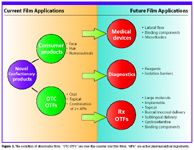
Figure 3
Summary
The true potential for oral thin-film technology is only beginning to be recognized. Additional immediate release over-the-counter OTFs, and eventually prescription drug OTFs will be commercially launched. Future dissolvable films will likely evolve beyond immediate-release oral delivery of drug compounds; exploration into the use of film formats to deliver nano-scale to large molecules is already underway. In addition, the chemistry and processing of the dissolvable-film platform technology broadens the application potential into implantable, topical, sublingual, dermal and gastro-retentive applications. Ultimately, dissolvable-film technology is only limited by the imagination and capabilities of the formulator.
Beth Vondrak is vice-president and general manager at ARx, LLC, a wholly owned subsidiary of Adhesives Research, Inc., and Scott Barnhart is technical director at ARx, LLC, PO Box 100, 100 Seaks Run Road, Glen Rock, PA 17327, tel. 717.227.3260/3206, fax 717.235.0172, bvondrak@arblobal.com or sbarnhart@arglobal.com
References
1. S.B. Borsadia et al., "Quick-Dissolving Films—A Novel Approach to Drug Delivery," Drug Delivery Technol. 3 (3), 63–66 (2003).
2. P. Frey, "Film Strips and Pharmaceuticals," Pharma. Mfg. & Packag. Sourcer, Winter, 92–93 (2006).
3. "Oral Thin Films," in Orally Disintegrating Tablet and Film Technologies, 4th ed. (Technology Catalysts International, Falls Church, VA, 2006), 18–31.
4. S.D. Barnhart and M.S. Sloboda, "The Future of Dissolvable Films," Drug Delivery Technol. 7 (8), 34–37 (2007).
5. I. Muir, "Growing Sales and New Opportunities for Oral Fast Dissolve," ONDrugDelivery—Oral Drug Delivery: When You Find the Holy Grail (East Sussex, UK), www.ondrugdelivery.com/publications/Oral_Drug_Delivery_07.pdf, accessed Feb. 20, 2008.
6. P. Van Arnum, "Outsourcing Solid Dosage Manufacturing," Pharmaceutical Technol.30 (6), 44–52 (2006).
7. S.D. Barnhart, "Thin Film Oral Dosage Forms," in Modified Release Drug Delivery Technology, 2nd ed., Vol. 1, in press (Informa Healthcare; New York, NY, 2008) 209-216.
8. Novartis Pharmaceuticals Annual Report (2005), p. 43.
9. C. Moritz, "Films that Dissolve Diagnostics Manufacturer's Needs," Med. Design Technol.10 (10), 11–13 (2006).
10. B. Meathrel and C. Moritz, "Dissolvable Films and Their Potential in IVDs," IVD Technol.13 (9), 53–58 (2007).
11. ICH, "ICH Q1C Stability Testing for New Dosage Forms," Federal Register 62 (90), 25634–25635 (1997).

Drug Solutions Podcast: A Closer Look at mRNA in Oncology and Vaccines
April 30th 2024In this episode fo the Drug Solutions Podcast, etherna’s vice-president of Technology and Innovation, Stefaan De Koker, discusses the merits and challenges of using mRNA as the foundation for therapeutics in oncology as well as for vaccines.
Drug Solutions Podcast: Applying Appropriate Analytics to Drug Development
March 26th 2024In this episode of the Drug Solutions Podcast, Jan Bekker, Vice President of Business Development, Commercial and Technical Operations at BioCina, discusses the latest analytical tools and their applications in the drug development market.
INTERPHEX 2025: Use of Walk-In Chambers for Bio/Pharma Development and Manufacturing
April 2nd 2025Sitting down with the PharmTech Group at INTERPHEX 2025, Christopher Murphy, director of Global Business Development and Service Customer Support at Environmental Specialties, discusses the design and critical role of walk-in chambers in the bio/pharmaceutical industry.